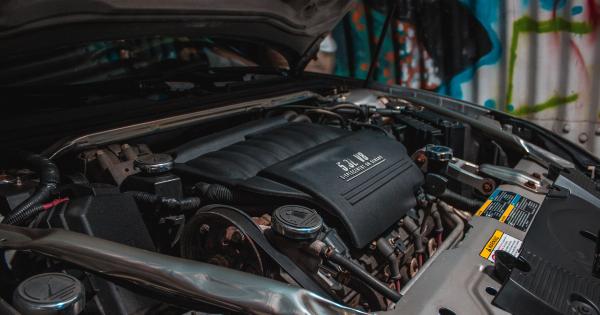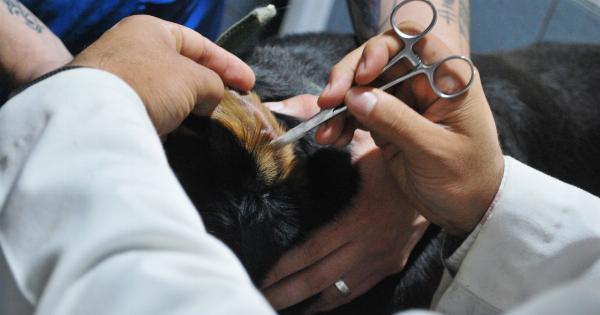Having a wet ear can be uncomfortable and even concerning for many people.
Whether you have water trapped in your ear after swimming or showering, or you have a continuous issue with moisture in your ears, it’s important to address the problem promptly and effectively. In this article, we will provide expert advice on how to fix a wet ear and alleviate any discomfort you may be experiencing.
1. Understanding the Causes of a Wet Ear
Before delving into the solutions, it’s important to understand the common causes of a wet ear. Some of the most common causes include:.
- Water entering the ear during swimming or showering
- Excessive sweating
- Changes in atmospheric pressure, such as during air travel or scuba diving
- Excessive earwax production or buildup
- Ear infections
- Injury or trauma to the ear
2. Remove Water from the Ear Canal
If you have water trapped in your ear after swimming or showering, it’s essential to remove it to prevent discomfort and potential complications. Here are some methods to try:.
2.1. Gravity Method
Tilt your head to the affected side and let gravity do its magic. By tipping your head downwards, you can encourage the water to drain out of your ear naturally. Gently tug on your earlobe to aid the process.
You may need to repeat this a few times until the water fully drains.
2.2. Vacuum Method
Another effective way to remove water from your ear is by creating a vacuum. Tilt your head to the side and use your palm to gently press against your ear, forming a seal. Then, rapidly push and pull your hand against your ear to create a vacuum effect.
This technique can often dislodge the water, allowing it to escape.
2.3. Use of Gravity and Heat
A combination of gravity and heat can also help to evaporate the water trapped in your ear. Lie down on your side with the affected ear facing downwards. Gently use a hairdryer on low heat setting, holding it around 12 inches away from your ear.
The warm air will help evaporate the moisture, and gravity will assist in its removal. Be cautious not to use high heat, as it may cause discomfort or damage to your ear.
3. Tackle Excessive Sweat
If your wet ear issue is due to excessive sweating, there are measures you can take to minimize this problem. Consider the following:.
3.1. Keep the Ears Dry
Use a clean towel to gently pat your ears dry as soon as you finish exercising or notice excessive sweat. Avoid wiping forcefully, as it can irritate the delicate skin of the ear and potentially push sweat deeper into the ear canal.
3.2. Use Cotton Balls
Placing cotton balls in your ears before engaging in activities that cause excessive sweating can help absorb the moisture. This can reduce the likelihood of water seeping into your ear canal and causing discomfort.
3.3. Consider Anti-Perspirants
If your ears sweat excessively, you may benefit from using an antiperspirant. Apply a small amount of antiperspirant to a cotton swab and gently dab it on the outer region of your ear.
Make sure to avoid applying it inside the ear canal, as it can cause irritation or damage.
4. Managing Earwax Buildup
Excessive earwax production or buildup can contribute to a wet ear sensation. To manage this, consider the following techniques:.
4.1. Soften the Earwax
Using a few drops of over-the-counter earwax removal drops, baby oil, or mineral oil, soften the wax to make it easier to remove. Lie down on your side and let gravity help the oil flow into your ear canal.
Stay in that position for a few minutes before gently rinsing your ear with warm water while tilting your head to the side. This should help dislodge the softened wax.
4.2. Consult a Professional
If you have persistent earwax buildup or are unsure about the best course of action, it’s always recommended to consult a medical professional.
They can safely and effectively remove the excess wax and provide guidance on preventing future buildup.
5. Addressing Ear Infections
Ear infections can cause moisture or fluid buildup in the ear, leading to a wet ear sensation. If you suspect an ear infection, it’s crucial to seek medical attention for proper diagnosis and treatment.
Some common signs of an ear infection may include:.
- Ear pain or discomfort
- Redness or swelling around the ear
- Drainage of fluid from the ear
- Hearing loss or muffled sounds
Your healthcare provider will prescribe appropriate medications, such as antibiotics or ear drops, and provide advice on managing the infection and associated wet ear symptoms.
6. Preventing Future Wet Ear Episodes
While it may not be possible to prevent all instances of a wet ear, there are several preventive measures you can take:.
6.1. Use Earplugs or a Swim Cap
If you frequently swim, using earplugs or a swim cap can help keep water out of your ear canals.
6.2. Dry Your Ears Properly
After swimming or showering, use a soft towel or a hairdryer on a low heat setting to thoroughly dry your ears. Tilt your head to the side to help water drain out.
6.3. Avoid Using Objects in Your Ears
Never insert cotton swabs, bobby pins, or any other objects into your ear canal as they can push wax or irritate the delicate tissues, potentially leading to a wet ear or other complications.
6.4. Keep Your Ears Clean
Maintain good ear hygiene by gently cleaning the outer ear with a soft washcloth. Avoid inserting anything into the ear canal, as it can disrupt the natural cleaning process.
6.5. Avoid Exposure to Irritants
Avoid prolonged exposure to substances that can irritate the ears, such as tobacco smoke, strong chemicals, or allergens, as they can contribute to a wet ear sensation.
Conclusion
Experiencing a wet ear can be uncomfortable, but with the expert advice provided in this article, you now have a better understanding of how to address the issue.
Remember to remove water from the ear using the appropriate techniques, manage excessive sweat, address earwax buildup, and seek medical attention if necessary. By following preventive measures, you can minimize the chances of future wet ear episodes and keep your ears dry and comfortable.






























